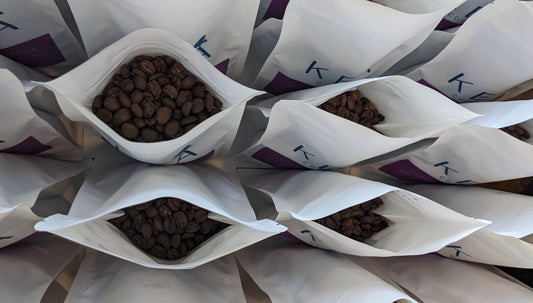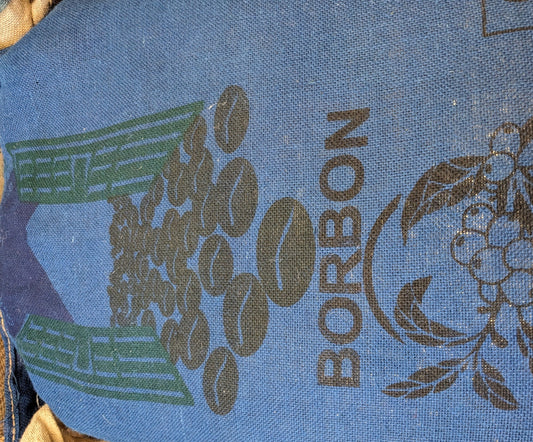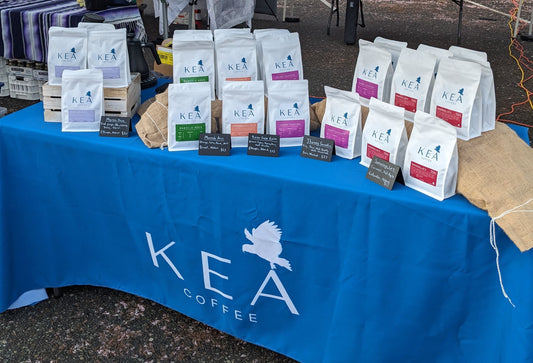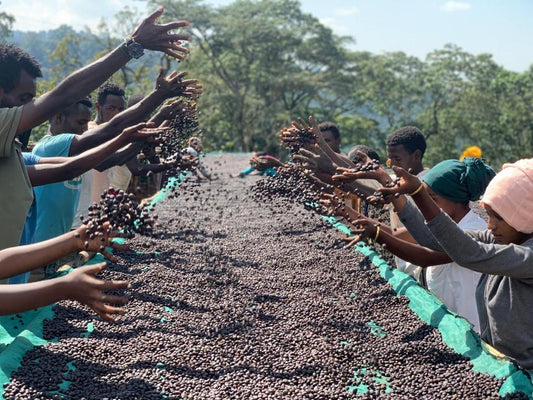The growing altitude of a coffee can have a huge impact on its quality.
There's no better example of this, than in the story of the rise of the Gesha varietal - potentially one of the most famous and well known coffee varietals in production today.
Gesha has been grown commercially in Panama since around the 1960's, after being imported from Ethiopia.
At this time it was mostly being grown at lower elevations and without the conditions it really needs to thrive. Lots of the initial efforts to cultivate Gesha in Panama were at around 1,400 meters or so above sea level.
And for a long time, it struggled to gain any real popularity.
Farmers and producers disliked it because it was difficult to harvest due to its delicate branches, and was also relatively low yielding compared to other varietals.
Consumers weren't too taken with it either.
Then, in 2006, Daniel Peterson stole the show at that years Best Of Panama coffee competition, with a high altitude Gesha lot that one of the judges famously said was so transporting, that when he tasted it he "saw the face of God in the cup".
That coffee was Esmeralda Special, and it went on to set a new world record as the most expensive coffee ever sold at auction, with an SCA cup score of 94.6.
This transformation in fortunes for Gesha, is the result of Daniel and the team at Hacienda La Esmeralda replanting the varietal at higher elevations, where its best characteristics can then have the chance to shine through.
The story of the rediscovery of Gesha is an extreme example of the difference that altitude can make in cup quality.
But why does elevation matter so much? And how does it actually effect the quality of the coffee?
Let's dive in...
When elevation increases, average temperatures decrease.
Coffee that's grown in cooler temperatures matures more slowly.
This extended ripening time for the coffee cherry does several things.
1. It increases complexity.
Cooler growing temperatures cause the coffee cherries to ripen more slowly, which gives more time for more complex sugars and acids to develop inside the bean.
This increased complexity contributes to a more nuanced flavour profile - something we typically want and desire in specialty coffee..
2. Acidity increases.
As well as being more complex, the general level of perceived acidity in coffee increases when grown more slowly at higher altitudes. This is often what gives us those bright, lively flavour notes of fruits and florals.
3. Sweetness increases.
With more time for sugars to develop during the ripening process, sweetness in the cup is also increased.
4. Bean density increases.
In general, higher grown coffees will have higher bean density than lower grown coffees.
Varietal and other growing conditions all play a part in bean density too of course, but as a general rule...
Density matters because specialty coffee roasters like us love to roast coffees fast.
Roasting fast helps to preserve more of the origin characteristics of the beans, and preserve more of the qualities we all enjoy drinking.
The denser the bean, the faster it can be roasted without causing roasting defects or other undesirable flavours in the cup.
Other advantages of higher elevation coffee production
Another important advantage for farmers at higher elevations, aside from producing generally higher quality coffees, is that the cooler temperatures also help to keep diseases like coffee leaf rust at bay.
The fungus that causes leaf rust thrives in temperatures between 21-25 Celsius, and it can't survive at all below 15C. In contrast, most coffee varietals typically do best between 17C and 23C, so if you can keep temperatures down by farming at higher elevations, you can also keep leaf rust fungus weaker and control it easier.
Other common diseases as well as pests like the coffee berry borer also struggle to thrive at these lower temperatures.
More resilience to common pests and diseases, means higher quality coffee with fewer defects, which again lifts the quality of the coffee overall.
The trade off
Cooler temperatures at higher altitudes will produce smaller yields, and take longer to grow.
Coffee grown at higher elevation can also be harder to farm, and more labour intensive than lower grown coffees which are easier to manage.
Depending on where in the world you are, higher elevations can also sometimes make resources like water harder to get, so it's not uncommon to find high altitude farmers who transport their harvests down to lower elevation washing stations to be processed.
High altitude Vs low altitude coffee
So how does high grown coffee compare to lower altitude coffee?
We've already discussed how higher altitude coffees tend to be much more complex, with brighter acidity and sweetness.
Well lower altitude coffees tend to lean towards the opposite of that.
They'll generally have much less acidity and usually less sweetness and be a little more flat.
You can still get some fantastic lower elevation coffees though, especially if they're processed well.
And lower elevation coffees also tend to be a bit more affordable too.
Popular higher altitude coffee origins
There are a lot of origins and regions that are known for producing consistently high quality, high altitude coffees.
In general, most Ethiopian coffee, as well as Kenyan too, tends to be extremely high grown.
Narino in Columbia is another great example. Farms here can exceed 2,300m / 7,500ft! Check out our recent profile on one of our partner farmers in Narino for more info there.





